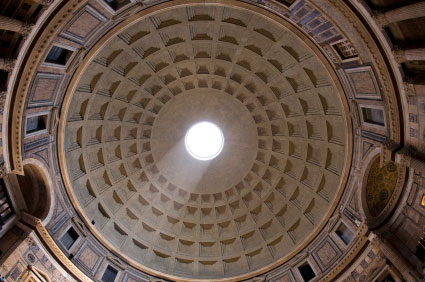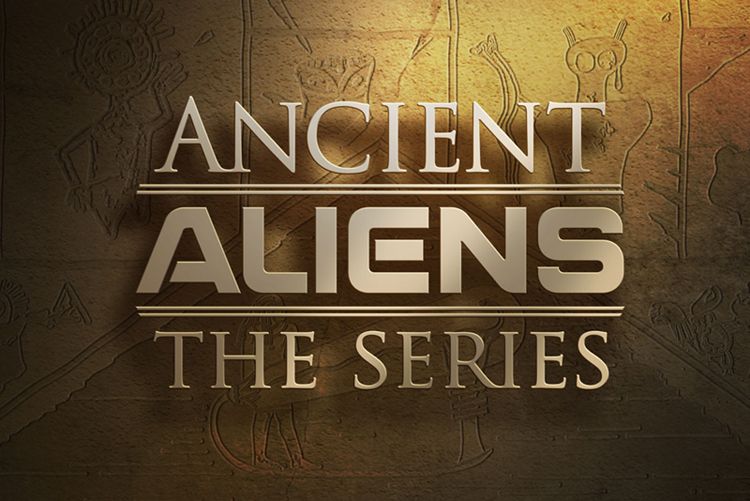roman concrete is an interesting subject.
the technique was lost during the middle ages.
Great post.
“..[H]ow did those Romans around the time of Christ build such elaborate, ageless structures in concrete as seen on the skyline of Rome?”
I have wondered the same thing so many times during my visits to Rome.
I was in the Pantheon 3 weeks ago. It is such an amazing piece of work. I dig the convex marble floor (which is quite noticable as you walk around the open interior) that drains away rainwater coming through the hole in the roof.
The best thing was, the McDonalds is gone! Yes, there was a McDonalds on the East side of the Pantheon for some years. One “M” sign remains, indicating 50 meters to the McDonalds. But the store itself is gone, thank goodness.
Good article thanks for posting it.
“Perhaps its longevity is told by its purpose . . . to honor all gods”
I’m sure that’s not it. Try again......
The REAL reason the Pantheon is still around is that it was converted to a church before most pagan monuments were deliberately destroyed by 4th and 5th Century mobs. Constans II didn’t even steal the brass ring along with all the other architectural brass in the city that literally let the place fall apart. (The brass for making weapons against the Muslims was subsequently captured on the way to Constantinople by Muslim pirates.)
Another fascinating post. Thanks.
Cured (kept wet) long enough, concrete turns into something like well-cured limestone—a lost bit of technology in a country of clients and bosses who won’t wait for anything. Too bad that their subservient slaves don’t build as well as I. Not for hire, BTW, until the default process has run its course and corrected a few business and political problems. ;-)

The Pantheon interior

Exterior
———with as little water as possible to give a stiff, “no-slump” concrete-——
ping for our resident concrete man
He finally gets around to the water, an ingredient unmentioned in the piece earlier.
Abram’s Law: Within the limits of workability, the strength of concrete is inversely proportional to the water cement ratio.
It gets me that we brilliant, genius, modern men can’t figure out how to reproduce this timeless concrete.
Thank you for the photos, afraidfortherepublic.
A fun way to learn about Roman engineering use of concrete is the novel, Pompeii by Robert Harris.
The novel is about a young “aquarius” or aquaduct engineer who gets the first warning about Vesuvius when problems start to occur in the water supply in Pompeii and Misenum a couple of days before the eruption.
Mixed in with his solving of the mystery of why the aquaducts aren’t working or have sulphur in the water is great information about the engineering of aquaducts, the core of which was the cast concrete water main.
You may not think this provides a great read, but I’m probably not giving a good enough precis to make it come alive—but give it a shot. As days pass and he begins to climb through the aquaducts onto the slopes of Vesuvius you want to shout, “Forget the damn water main. Grab your girl and get the hell out before the volcano blows.”
Bfl

Originally built in 27 BC by emperor Agrippa, the Pantheon was destroyed in a fire in 80 AD. Hadrian commissioned the rebuilding of the temple but there is no indication of the emperor on the building at all. Over the portico is an inscription "Marcus Agrippa, Lucii filius, consul tertium fecit" meaning "Marcus Agrippa, son of Lucius, Consul for the third time, built this"
. 
The rotunda is 43.3 m (142f) high and has a rectangular entrance with 8 granite columns. The scientists were puzzled for many years how the ancient Romans built this large dome and finally they discovered that it was made of concrete that gets lighter the higher it goes because it was mixed with lighter volcanic stones.

The Pantheon is one of the most visited sites in Rome today. It is still used as a Catholic church and holds mass daily.
most intersting post. the romans were astounding. visited thepantheon a few years ago and was stunned by it. it still awesome even after the later christioans mined it and modified it.
stuff the romans built still stands in perfect condition. i visited a roman aqueduct in segovia spain. even after 2000 years it still stood , you couldnt fit a knife blade between the huge stones cut to build it. all crafted without steel tools.
i think they had the internet though, so that was some help.
It’s amazing how well people can do a thing if you tell them to do it, and do it well, or be fed to the lions.
History Channel's answer:
